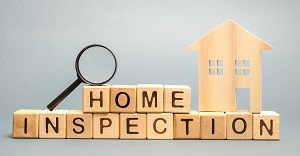
On the top of everyone’s home safety list is adding security cameras, smoke alarms, carbon monoxide detectors, but one that is often overlooked is testing for radon. According to the US Environmental Protection Agency, radon is the number one leading cause of lung cancer among nonsmokers. This silent killer is responsible for about 21,000 lung cancer deaths each year. Read on to learn more about radon and the lasting effects it can have on you and your family.
What is Radon?
Radon is an odorless, colorless radioactive gas that is commonly found in homes. This gas comes from a natural breakdown of uranium found in soil, rock, water, and gets into the air you breathe. This can be particularly dangerous because you cannot see, smell, or taste radon, but it’s still a major unseen problem in your home and breathing too much of it can cause physical problems such as lung cancer, especially if your young children are exposed to it.
Are You at Risk?
There have been many cases of radon gas measured in every state. People that often breathe in radioactive particles or swallow high levels and exposed to radon for a long period of time are ten times higher risk of developing lung cancer. If radon exceeds the acceptable levels, the result can be deadly and often takes years before the physical problems appear. Your chances of getting lung cancer from radon depend on:
- The amount of radon in your home
- The amount of time you spend in your home
- If you are a smoker, or if you’ve ever smoked
How Does Radon Get Inside?
Radon sneaks its way into your house by coming in through the ground or the air through cracks and holes in the foundation. If you have a well for drinking water, radon often gets into there. Although radon buildup occurs in any building, it’s particularly dangerous in homes where people spend lots of their time.
How to Reduce Radon Gas in Your Home
In homes that are older, newer, with basements, or without basements, can all have radon issues. Testing is the only way to determine how much radon is present in your house. In order to reduce radon levels, you must call a professional home inspector in order to seal off the cracks in the floors and walls to increase ventilation.
If you think you are at risk of radon exposure, be sure to call the professionals at the Homeinex Corporation to get a prompt and in-depth inspection to be sure you keep you and your family safe. For over 25 years we have been providing inspections in Massachusetts, Connecticut, Maine, and Rhode Island for over 25 years. Contact us today.